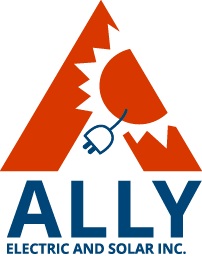NEM 2 Sunset Contractor FAQ's
/When does the NEM2 program end?
The NEM2 Program will be closed to new applicants starting April 15th, 2023.
What do I need to submit to qualify a customer for NEM2?
Before 11:59 on April 14th, 2023, you must submit the following:
Completed application, free of major deficiencies (e.g. no blanks, incomplete/inaccurate documents, changes requiring resubmission per Rule 21)
A single-line diagram (a simplified representation of an electrical system)
A signed Contractor State License Board (CSLB) Disclosure and Solar Consumer Protection Guide (for residential, non-self install only)
A signed Agreement
To retain eligibility, final electrical clearance (often referred to as final building or electrical permit) must be submitted before April 15, 2026.
Can new construction projects that have applied for service but are unable to submit a generation application before the NEM2 sunset date still qualify for NEM2?
PG&E will make an exception for new construction projects unable to submit a completed application by the sunset date. If the load application is submitted by the NEM2 sunset date, the project will be eligible for NEM2 provided the site is energized under the same Service Point notification (also known as project or notification number). To retain this eligibility, final electrical clearance must be granted by April 15, 2026.
Can I make changes to my application after submission?
A one time modification request will be allowed for:
Like-for-like equipment replacements
System size reductions not exceeding 20% (Any upgrades or mitigations caused by the change would be paid for by the customer)
System size reductions to avoid upgrades if the re-study determines the modification affects no other distributed energy resource (This modification affects no other distributed energy resource (This modification requires a $300 fee.)
What does like-for-like equipment replacements mean?
For inverters: Certified, same nameplate or smaller, same fault current or smaller
For solar panels: Certified same CEC-AC rating of the system or smaller
For batteries: Same or less kWh and kW rating and same operating profile
For transformers: Same connection type, same or smaller impedance and capacity
How is system size determined?
For solar system: The lesser of inverter nameplate capacity (kW) or maximum solar output (CEC-AC rating)
For batteries: Both the inverter nameplate capacity (kW) and the capacity of the storage device (kWh) are considered in the definition of size
For other generation types: The gross nameplate rating of the generator
Can I add a battery to my application after I submit?
Adding a battery after initial submission is considered a material modification that would result in withdrawal and resubmission of the application. If the resubmission of the application is after the NEM2 sunset date (April 15, 2023), the project will not qualify for NEM2. Instead, you could gain Permission to Operate (PTO) approval without a battery and then submit an interconnection request for the battery later without losing NEM2 eligibility.
How will uncompleted applications left in the portal be treated after the sunset date?
Any applications that are in progress and not submitted in the portal by 11:59 p.m. on April 14, 2023 will be canceled. Contractors will be notified of their need to resubmit the interconnection application in the PG&E interconnection portal under Solar Billing Plan.
Can I add to my existing NEM1 or NEM2 system and not move to the new tariff?
You can increase your system size up to 10% or 1kW, whichever is greater, without moving to the successor tariff. If you increase your system size beyond this threshold, it is unclear if you can remain on NEM1 or NEM2 for the 20 year period (legacy status) from date the solar system PTO approval was provided. The final decision was not clear on how modifications above the threshold would work after the sunset date. These details will be determined in the coming months.
These questions and answers were taken from the official PG&E website.


